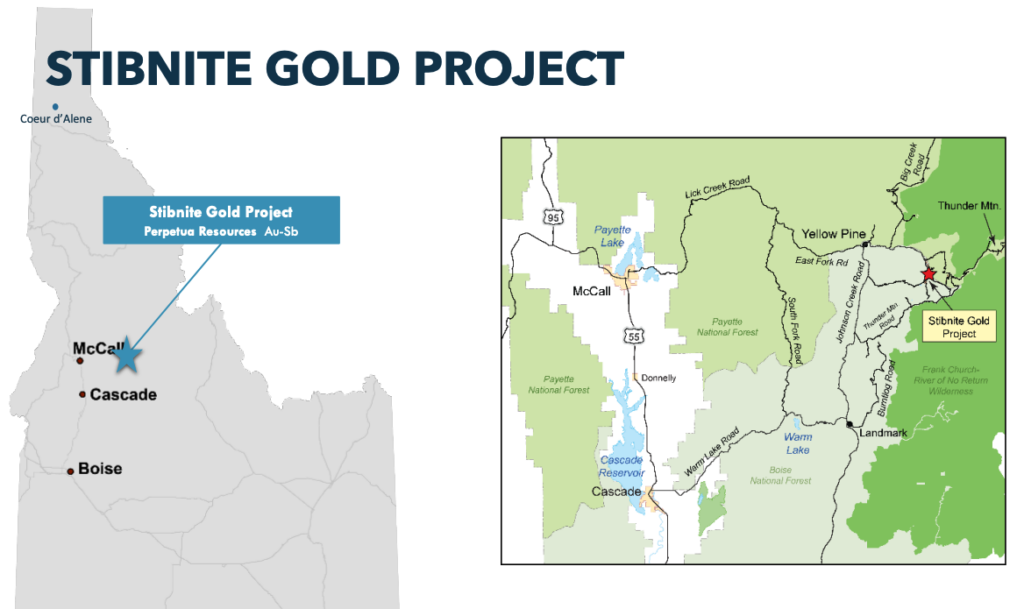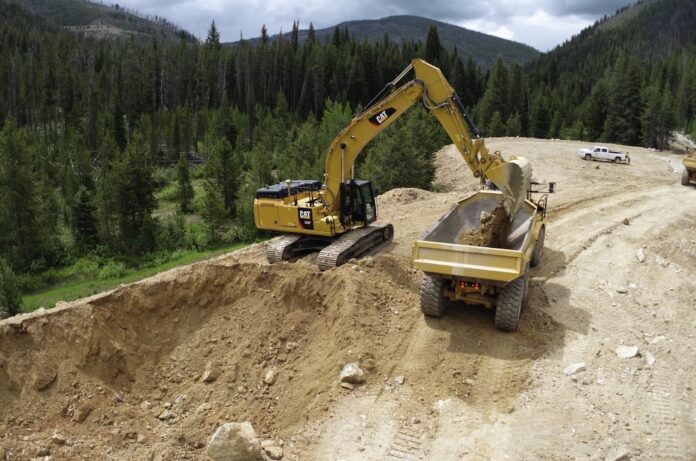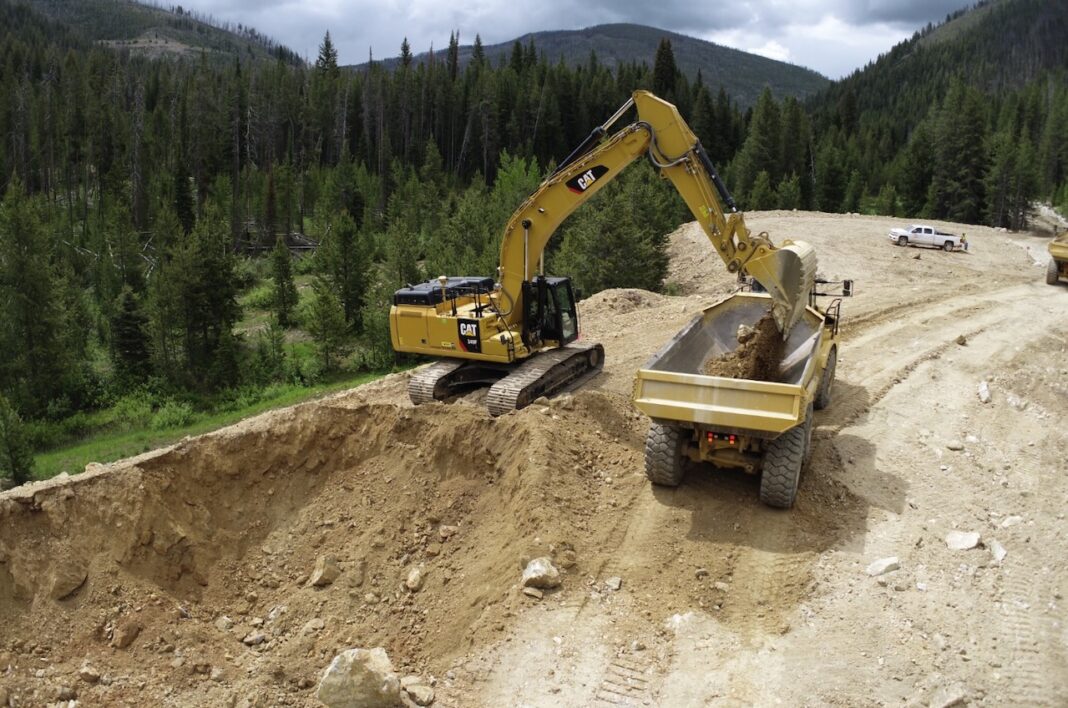An air quality permit issued for a gold and antimony mine in eastern Valley County could allow toxic levels of pollutants linked to cancer, according to a lawsuit filed on Thursday.
The lawsuit, filed in the Fourth Judicial District Court, says the Idaho Department of Environmental Quality ran afoul of clean air standards in approving the permit for Perpetua Resources’ Stibnite mine near Yellow Pine.
As a result, the mine could pose a risk to anyone in the project zone by emitting dust containing higher concentrations of contaminants, including arsenic, than allowed by the Clean Air Act, according to the lawsuit.
The suit was filed by the Idaho Conservation League and Save the South Fork Salmon, a McCall advocacy group for the South Fork Salmon River, which flows through the project site.
“DEQ’s misleading analysis of arsenic emission and cancer risks could expose anyone who works or recreates near the mine to dangerous levels of toxic and carcinogenic pollution,” said Will Tiedemann of ICL. “We should be able to trust that agencies such as DEQ will protect the public instead of misleading us about public health risks.”
The lawsuit asks a judge to remand the permit to DEQ and direct the agency to revise it for compliance with the Clean Air Act and other regulations.
Anna Marron, a DEQ spokesperson, said the agency is reviewing the filing, but declined further comment due to active litigation.
Perpetua: lawsuit tries to ‘sow fear, uncertainty’
Perpetua stood by the air quality permit in a statement provided to Valley Lookout, noting “years of regulatory review, refinement, and rigorous science-based analysis” that shows the company’s project meets “all requirements of state and federal law.”
“Repeated legal challenges against the air permit have been rejected, underscoring the integrity of the permitting process,” said Marty Boughton, a Perpetua spokesperson. “This latest judicial appeal represents yet another attempt by the same organization to reuse previously discredited claims and sow fear and uncertainty.”
The lawsuit was filed following multiple rounds of appeals involving the Board of Environmental Quality, which presides over DEQ, and an independent hearing officer. The appeals ultimately did not yield the changes sought by the conservation groups.
“Time and again, DEQ has been given an opportunity to protect public health from toxic air pollution as the law requires, and time and again it has failed to do so,” said Judy Anderson of Save the South Fork Salmon.

Airborne emissions
Perpetua’s mine, approved earlier this year by the Payette National Forest, would annually generate more than 1,000 tons of particulate matter—one of the two main pollutants at issue in the lawsuit.
Without donors like you, this story would not exist.
Make a donation of any size here
About 72% of the particulate matter would come from dust generated by trucks driving on a 55-mile network of haul roads on the mine site. The dust would also contain arsenic, which has been linked to cancer.
The permit issued to Perpetua says the emissions would not exceed air quality standards, but the lawsuit says DEQ used improper methods to arrive at that conclusion.
The lawsuit also questions DEQ’s airborne arsenic calculations, which involved dividing the 16-year total of arsenic the mine would emit by a 70-year human lifespan.
A final order issued by the DEQ Board on May 27 found that the agency “acted reasonably and in accordance with the law” in issuing the permit. The board also ruled in favor of DEQ on June 27 after a reconsideration request was filed by the conservation groups.
The air permit limits daily production to 180,000 tons of ore per day and total production to 788.4 million tons of ore during the 12 to 15-year life of the mine.
Drilling rigs would be equipped with dust control systems, under the permit, which also requires other dust control measures and compliance monitoring.
Stibnite project background
The air permit is among a package of 50 permits and approvals Perpetua is required to hold to operate its proposed Stibnite mine.
The most significant of those approvals was granted earlier this year by the Payette National Forest, the lead permitting agency on the project. However, the approval has since been been challenged in court, as Valley Lookout reported.
The mine could produce an estimated 148 million pounds of antimony and 4.8 million ounces of gold, which would account for nearly all of the mine’s projected revenue.
The metals would be extracted from three open-pit mines totaling about 473 acres within the 1,740-acre project zone, which is about three miles from the Frank Church – River of No Return Wilderness.
Opponents of the mine fear it could pollute the East Fork South Fork Salmon River, which flows through the project site, and cause other environmental damage.
Water quality in the East Fork and other streams at the proposed mine site do not currently meet federal drinking water standards due to high concentrations of arsenic and antimony from pollutants left by previous mining companies.
Perpetua’s mining proposal is authorized by the General Mining Act of 1872, a federal law that allows anyone to patent mining claims on public land.






